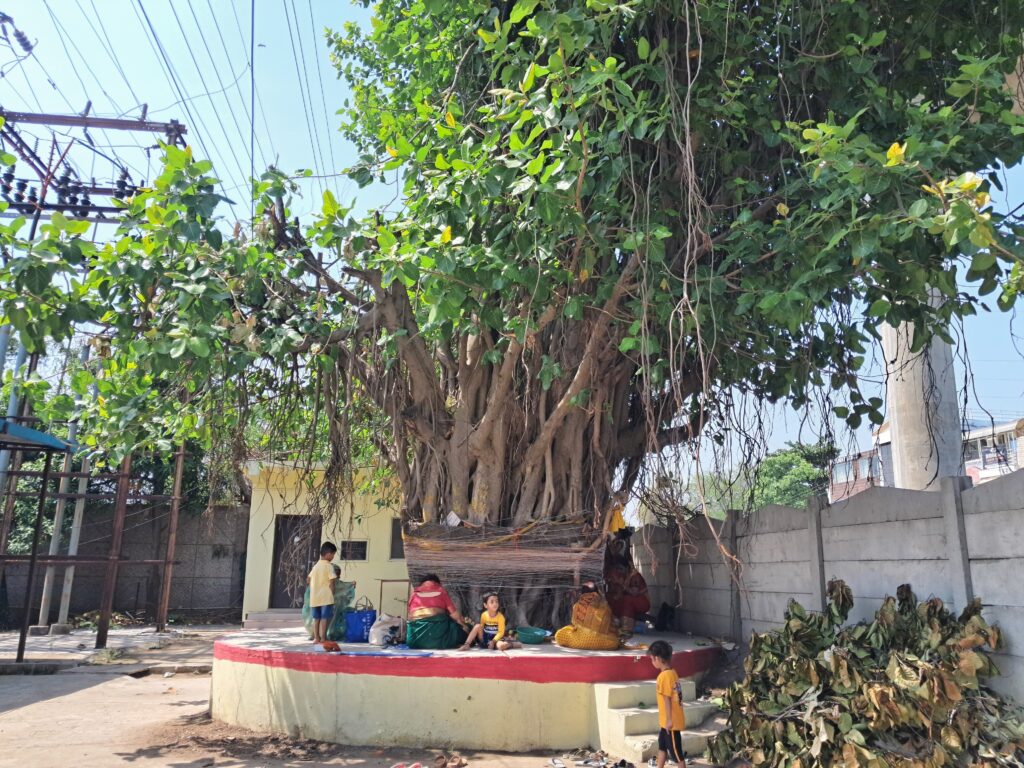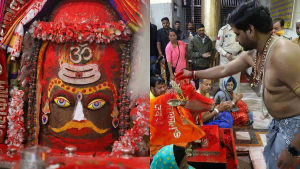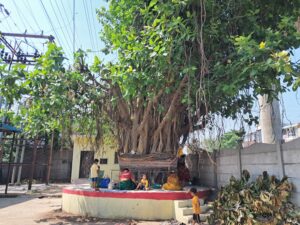
By Medha Bajpai
At the time of writing this article, the entire India is affected by heavy rains. The plains are also affected by storms, that too in the month of May when it is the time of Nautapa. The immediate problem that this changing weather has brought is that the mango crop has been ruined, and there is concern about whether there will be proper rains at the right time for sowing crops in the fields or not. And at the same time, there is a struggle going on to save 8000 trees from being cut in Bhopal. I felt it necessary to tell this also because Vat Savitri fast is about to come. Which is related to nature worship.
Nature has the status of divinity in Indian culture. Worship of trees, rivers, mountains and animals and birds is not just faith, but also a profound message of environmental protection.
Atharvaveda (5.4.3) praises
“Vanaspate namastubhyam, yathabhutaam yathabalam.”
(Oh vegetation! I salute you, give me strength just as you are.)
The threads of Vedic tradition are still prevalent in folk customs. The elements of Tulsi Puja, Peepal Puja and Banyan tree worship are connected to forest conservation. In villages even today, cutting trees is considered a sin and planting trees is considered a virtue. The meaning of offering lamps to rivers is to respect the river.
Protection of nature has been considered a part of human religion
From Vedas to Puranas, in our religious texts, protection of nature has been considered a part of human religion. Vat Savitri Vrat is born from these traditions, a festival which is a beautiful amalgamation of women power, family values and tree protection. Vat Savitri Vrat is celebrated on Amavasya and Purnima in the month of Jyeshtha.
A pledge to connect with and protect the entire nature
On this day, women worship the Vat tree, tie a Raksha Sutra around the Vat tree and take a pledge that O tree god, I will protect you, you also protect us and seek this assurance by embracing the tree. (According to a ritual, the tree is embraced in this fast) It is a pledge to connect with and protect the entire nature. This tradition has been a powerful medium of protecting trees by women for generations.
A symbol of age, patience, and stability
Worshiping nature is not just a custom, it is a policy of saving life. Vat Vriksha (Banyan) is considered a symbol of age, patience, and stability. Its dreadlocks symbolize knowledge, roots tradition, and branches expansion of life. According to spiritual guru Sadguru, Banyan tree is extremely sensitive, hence the sages sat beneath it and meditated and gained knowledge.
Ecological changes taking place under the Banyan tree in the month of Jyeshtha
The month of Jyeshtha which is the time of May-June is the hottest and driest time of the year in India. During this season the temperature is very high and the humidity in the air decreases. In such a situation, the Banyan tree, also known as Banyan, plays a very important role in maintaining ecological balance.
The dense and wide shade of the Banyan tree prevents hot winds and reduces the temperature of the land. It makes the local ‘micro-climate’ cool. In summer when there is more dust and pollution, pure air is found near the Banyan tree. This provides relief in respiratory problems. Elements like the bark, leaves and milk of the Banyan tree are medicinal. They are used in diseases like skin diseases, diabetes, diarrhea. It is important in traditional medicine.
Home of birds, insects and small animals
Moisture conservation and soil erosion stops. Its branches, dreadlocks and shade become the home of birds, insects and small animals. Ecological balance is maintained. Creatures like bees, squirrels, birds stay nearby and help in pollination.
The centre of social and cultural activities strengthens the mutual interaction and social unity between rural and urban communities. Fasting and meditation increase mental concentration. Group discussions and religious stories during worship provide mental peace.
In the scorching heat of Jyeshtha, the Banyan tree not only provides natural coolness, but also becomes a symbol of environmental protection, social harmony and cultural faith. This tree provides protection, energy and comfort to people directly and indirectly. And it is necessary to pass on this feeling as inheritance to the next generation.
(The author is an educationist and columnist)








The true example of Indian knowledge tradition is found in fasts and festivals